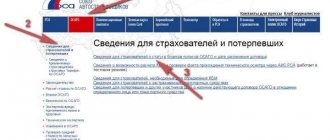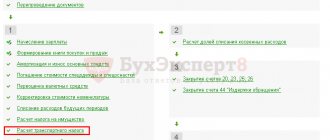For what reason did the question of introducing the Plato system arise?
Every year the flow of cars moving on the roads of our state is increasing. The more vehicles there are, the more damage is caused to the road surface. It is not without reason that heavy vehicles cause particular harm to the integrity of the roadway. It is their tires that wear out the road surface the most and it is under their weight that ruts are formed, into which cars then end up. And given that trucks often come with violations of loading standards, the damage is even more serious.
Therefore, repairs on such highways are required more often. There are not enough budgetary funds to fully maintain roads in good condition, so a transport tax is collected at the regional level. But federal roads do not receive such an infusion of funds in the form of a transport tax.
ATTENTION !!! In order to receive additional funds, the “Platon” fee system was created on behalf of the Government of the Russian Federation (its name was derived from the words “ton” and “fee”). Similar systems operating in many developed European countries were taken as a model (for example, in Austria, which was the first in the European Union to implement a similar idea).
The introduction of this fee system gave rise to a wave of protests, including large-scale ones. But, nevertheless, “Platon” continues to operate, since its launch has reduced the burden on the federal budget. Some cities even have billboards with information provided by the Federal Road Fund about which roads and to what extent have been repaired with proceeds from Platon.
The Wikipedia website indicates that revenues from the work “Plato” in 2016 reached almost 22 billion rubles. With the increase in tariffs and the increasing inclusion of road freight carriers in the system, budget revenues correspondingly increase.
PLATO. How does this system work?
In connection with the innovations associated with fees for heavy vehicles for travel on federal roads, there is a lot of controversy.
- Most drivers wonder why they should pay extra money for travel, because they, like other drivers, pay all transport costs out of their own pockets.
- On the pages of this article you will receive detailed explanations of what and how the PLATO system works, and why there was a need to launch it.
- If the explanations set out in the article seem insufficient to you, then you can ask a clarifying question and receive qualified help on our portal.
Objects and elements of the PLATO system
Like any other system, PLATO cannot function normally without creating a single closed chain of all the most important elements:
Principles and description of the system operation
- This diagram clearly shows the operating principle of the PLATO system:
- If the driver has already registered and installed a special device, then based on its readings, the fare for the day of movement is calculated.
- If for some reason the owner of the car did not do this, then before setting off on the road he is obliged to pay for the movement based on the route map drawn up and registered in the terminal.
- The driver should not deviate from the paid route; PLATO will be able to control this through stationary control frames or through mobile control systems installed on passenger cars.
As we have already described above, on board any heavy vehicle traveling along federal highways, a kind of on-board computer must be installed, that is, a unit that automatically communicates with the nearest data processing center via a satellite communication system.
Route map
- Many people do not understand what a route card is, why it is needed and where it should be presented.
- It should reflect the number of the card itself, the registration numbers of the car, with the date of start of movement and the date of receipt of the document, total mileage, reference to a specific federal highway, etc.
- You can get a free consultation from our specialist by filling out a request at the end of the article, they will be able to explain everything in detail and clarify the information.
You must pay for travel in advance using a bank card or in cash at any nearest terminal of the system.
You can also do this through the mobile application or on the system’s Personal Account page.
Postpayment, that is, deferred payment, is provided upon application and only if a number of conditions are met:
- the user must be registered in the system for at least two months;
- not have overdue payments for 6 months;
- The user must have no unpaid fines under PLATO.
- We invite you to watch a short video about innovations in the operation of the PLATO system:
- Driving a heavy truck without appropriate registration in the system is punishable by a fine.
- The scale of penalties is differentiated:
- so a simple driver working for hire will be required to pay up to 5 thousand rubles ;
- for private small companies it will already be up to 40 thousand ;
- for large enterprises - up to 455 thousand rubles .
We recommend: From what time and until how much can you make noise in an apartment according to the law of the Russian Federation 2021: weekends and weekdays
The company's management notes that all funds collected from drivers of heavy vehicles with a tonnage of more than 12 tons are directly transferred to the state Road Fund, and from it money can be transferred to regional authorities for the reconstruction of old road surfaces or the laying of completely new transport road arteries for local purposes.
According to the Government, the system can help improve the road situation throughout the country, build new transport interchanges to improve the current difficult situation with all roads in Russia.
The fight against “gray” carriers
The information received by the PLATO system, according to First Deputy of the Ministry of Transport Evgeniy Dietrich, will be provided to the Federal Tax Service (FTS).
That is, a transaction in which goods were allegedly purchased and paid for, but there is no data on its movement from the consignor to the consignee confirmed by PLATO, will be considered as questionable or, worse, as a transaction for which there was no transaction.
PLATO is not shy about sharing information. According to the general director of the operator of the PLATON system, Anton Zamkov, the data collected by the system is already used by: the Ministry of Internal Affairs, Rostransnadzor, the Federal Bailiff Service and the Federal Customs Service.
It is difficult to disagree with the fact that the services listed above now have such an informant, in the person of PLATO, whom they could not even dream of before. The fight against “gray” carriers has begun on all fronts,
The effect for the country from the introduction of the PLATO system
The transport congestion is simply enormous; every day we deliver cargo across the country, both to big cities and small towns. As the project manager notes, the sum of all cargo deliveries throughout the country costs approximately 5 billion rubles, and the damage to roads is as much as 180!
To balance these figures and bring them to a single denominator, a per-kilometer payment system was launched for heavy vehicles throughout the country.
The money collected will be used to improve roads throughout the country - reconstruction and construction of new routes, and this, of course, will benefit the development of economic activity of the state and improve the economic situation.
Essence "Plato"
The main operating principle of this system is to charge a fee for each kilometer that a heavy-duty vehicle travels along the federal highway. This is possible by installing on board a truck or other vehicle device connected to the GLONASS or GLONASS/GPS system (depending on the model). The on-board GLONASS device, coupled with a complete road map and vehicle database entered into the system, allows you to quickly track the route of a heavy truck for the most accurate calculation of the toll amount.
The system has its own official website. The specified Internet resource is located at www.platon.ru. Here you can find a lot of necessary information regarding the toll system, including the latest news.
What is "Plato"
The system is a technology for monitoring the transportation of goods on federal roads. It allows you to identify the owner of a car of a certain carrying capacity, as well as take measures to collect the due funds from him.
Note: the name “Plato” is an abbreviation for the phrase “payment per ton”. It clearly expresses the essence of the project - a fair distribution of responsibility between car owners for the condition of the road surface.
The technique assumes the following things:
- Division of vehicles by their tonnage.
- Charging fees from heavy truck owners.
- Organization of the control system:
- for the use of transport infrastructure at the federal level;
- for making mandatory payments.
Attention: owners of passenger cars are not affected by the innovation. They can use the roads without compulsory payment (except for toll roads).
Project goals
Road surfaces throughout Russia are subject to serious stress. Due to the rise in prices for rail transportation, in the last decade, manufacturers and distributors prefer road transport. This has led to increased pressure on road surfaces.
In addition, it is affected by various other factors:
- temporary (depreciation);
- climatic (cold in northern latitudes, heat in the south);
- natural influences and more.
The general rule that all users are required to participate equally in trail maintenance did not stand up to scrutiny. After all, the impact on the asphalt depends on the weight of the car. Passenger cars do not cause as much damage to the road as heavy refrigerators and trucks.
The main goals of the Plato project are:
- fair redistribution of costs for the use of federal highways;
- creation of an additional fund for their repair and reconstruction (probably the construction of new ones);
- introduction of a modern control system for cargo transportation;
- accounting for the movement of goods and materials across the country.
We recommend: New law on housing for large families in the Russian Federation
For information: the electronic system for monitoring the movement of goods is also a defensive measure. It will allow the redistribution of products in the event of a crisis situation (which Plato’s critics forget about).
System elements
In practice, the control mechanism consists of several parts. Each performs its own functions. Namely:
- electronic complex for registering program participants (the parameters are given below);
- methodology for accounting for each registered user;
- navigation devices issued to registered car owners free of charge;
- structures:
- collection of payments;
- monitoring the correctness of payment of contributions and use of travel rights;
- implementation of punishment for violation of the rules.
Hint: the complex’s work covers the entire vast territory of Russia. It is a kind of pilot project for the development and implementation of other modern management structures.
Regulation of the Plato system
The legal aspects of the existence of “Plato” are set out in Decree of the Government of the Russian Federation No. 504 of June 14, 2013. This document sets out the basic rules by which tolls are collected for the use of federal highways, provides basic concepts and other important issues regarding the existence of this system.
Also, some issues are addressed in Federal Law No. 275-FZ of November 8, 2007 and in Government Order No. 1662-r of August 29, 2014.
The Platon system is supervised by the Federal Road Agency (Rosavtodor). The full cycle of maintenance and modernization, including collection of funds, is carried out by RT Invest Transport Systems LLC.
History and background of system development
The Platon system was developed by analogy with foreign programs. One of the main prerequisites for the implementation of the system is the unsatisfactory condition of federal public roads and the lack of budget funds for their restoration. The Russian government has come to the logical conclusion that the main damage to asphalt pavement is caused by multi-ton trucks. They wear out the road surface and push through the “cushion” of crushed stone and sand, which causes the formation of “dents” and ruts on the asphalt.
Read also: Law on lotteries
There were not enough federal budget funds to constantly restore “worn out” roads. The program developers decided to use the funds raised to repair and build new routes.
System in figures and facts
The first country to introduce a system for collecting funds from heavy trucks is Austria. In Russia, the program began to function only in the fall of 2015. The introduction of the Platon system caused a lot of outrage among drivers and owners of multi-ton vehicles. In order to reduce the financial burden on them, it was decided to exempt the owners of heavy trucks from paying transport tax if the amount of contributions to the system exceeded the tax accruals for the current billing period.
However, starting from 2021, this relaxation measure has been abolished. Now owners of multi-ton trucks will have to pay both types of mandatory contributions.
Connection to the Platon system
To add a vehicle to the database, it must be registered in the toll collection system.
There are three possible ways:
- when the cargo carrier issues a so-called route card at self-service Terminals;
- on the portal "Platon";
- in the Centers where information support is provided to system users.
A personal account is created for each user with a unique login and password. The personal account gives the user ample opportunities: adding a new car to the database, editing the personal data of the vehicle owner, replenishing an account to pay fees, registering a new route card, sending requests to the Platon management company, etc. There is also a Mobile application "Plato".
Violation of rules and prescribed fines
Failure to fulfill obligations to make mandatory payments is a violation of No. 257-FZ and is punishable by administrative fines. Violations also include improper operation of calculation equipment, namely:
- Disabling the on-board computer.
- Installation of unlicensed equipment.
- Refusal to install devices.
- Deviation from the planned route without making appropriate changes to the equipment.
- Working with faulty or malfunctioning equipment.
- Traveling without obtaining a route map.
Read also: National Welfare Fund of Russia
For any of the listed violations, a fine of 5,000 rubles is imposed. The penalty is issued to the owner of the heavy truck, provided that he is a citizen of Russia.
Note: if the car is registered to a foreign citizen, then the obligation to pay a fine rests with the driver of such a car.
If a violation is detected again, you will have to pay a penalty, the amount of which is already 10,000 rubles.
Methods of compensation for damage caused by heavy vehicles to federal highways
The above compensation can be made in two ways:
- in the form of an advance payment;
- as a payment according to the meter according to the kilometers traveled.
When making an advance payment, a route map is first generated, which indicates which routes the vehicle will take, and then payment for the entire route is made.
When paying according to the distance traveled, you do not need to pay for the entire route at once; it can be paid in installments. The user's personal account must have an amount sufficient to travel to the next tracking frame. The second method is most often used by representatives of small transportation businesses.
In both cases, the vehicle is re-registered in the system before each trip. But the difference between the two methods is not only the amount initially deposited into the account. The second method allows you to quickly change your route without fear of being fined. But the advance method also has its advantages: it allows you to pay for several upcoming trips a couple of months in advance.
The cost of travel for 12 tons per 1 km is 1 ruble 90 kopecks.
Calculation of payment and methods of making charges
The amount of mandatory payments depends on the kilometers traveled by the heavy truck. For the calculation, a single cost of 1 kilometer is established. This tariff has changed several times and is:
- When implementing the Platon system - 3.5 rubles per 1 km.
- In the spring of 2015, the tariff was revised, and the cost of 1 km increased to 3.73 rubles.
- In the autumn of the same year, the Government established a “preferential” coefficient of 0.41. Thus, the cost of 1 km was 1.53 rubles.
- In March 2021, the Government planned to increase the tariff to 3.06 rubles, but this change was not accepted and the cost remained unchanged.
- In the spring of 2021, the “preferential” coefficient was revised. After the changes, it was 0.51, and the cost of 1 km increased to 1.91 rubles.
Nuances of the Plato system
In 2021, the amount of the mandatory payment under Plato is calculated using the formula: 3.73 * 0.51 * P, where P is the distance traveled by the truck along the federal highway, measured in kilometers.
Payment between the owner of the truck and the operator of the Platon system is made by non-cash method. If an on-board computer is installed in the cabin of a heavy truck, then when paying, funds are automatically debited from the individual personal account of a specific vehicle. If a route card was issued, then payment is made by bank transfer using the operator’s details.
Read also: Federal Law No. 15 on the smoking ban
It is also possible to deposit funds through terminals, a mobile application or a personal account.
How to control the movement of a heavy vehicle
The movement of a heavy-duty vehicle is controlled using on-board devices. Shippers immediately ask the question: “What is this and how much does it cost to install?” This is a technical tool that uses one of two navigation technologies: either GLONASS or GLONASS/GPS.
Receiving and further use of the device is absolutely free for the truck owner. To install it on board, registration in the system and the conclusion of an agreement on use with the company managing the system, i.e. with the above-mentioned “RT-ITS”. To conclude a contract and receive a navigation device, you must contact the Center, where information support for users is provided.
ATTENTION !!! Briefly about how monitoring the movements of heavy vehicles works. To track the route of cars along all federal highways, special frames with an electromagnetic field are installed (at the moment there are almost 500 of them). When driving through such a frame, mileage data will be read. Such data is promptly sent by the system to the settlement center, and funds are debited from the cargo carrier’s personal account.
Service for the navigation tracking device is also free of charge, except in cases where the device was operated in violation of the instructions. Replacement of failed technical equipment is also free of charge. Upon termination of the cargo carrier's activities or in other cases of termination of the contract, the on-board unit must be returned.
How to use
The responsibilities of heavy truck owners include proactive registration in the electronic system . According to the law, vehicles without an account have no right to travel on federal-level highways:
- Road use is prepaid in two ways:
- using a recording device;
- by registering a route map (cancelled from 01/26/16);
- funds from the personal account are debited automatically according to the on-board lock data;
- the balance may be returned to the payer;
- owners of several heavy goods vehicles must register each;
- cars can be linked to one personal account.
From 04/15/2017, according to the Decree of the Government of the Russian Federation dated 03/24/2017 No. 330, the cost of 1 km of federal road is 1.9 rubles based on a tariff of 3.73 rubles and a reduction factor of 0.51 and indexation was frozen until June 30, 2021 year inclusive. It was reduced at the request of car owners carrying out mass transportation of goods within the Russian Federation and abroad.
We recommend: Federal Law on state benefits for citizens with children in 2021
Example
Individual entrepreneur Petrov is engaged in cabotage transportation. In May 2021, he registered with Plato. He was provided with a brace. Over the next month, Ivanov traveled 3,000 km, of which 1,500 km were on federal roads.
The following was debited from his personal account:
- 1,500 km x 1.9 rub. = 2850 rub.
Attention: tariff changes occur by decision of the Government of the Russian Federation. The company organizing the work of Platon charges a subscription fee of 500 rubles.
How to register
Car owners are required to take the following actions in order not to violate laws related to the use of federal highways:
- Go through the registration process in the Platon register on the official website https://platon.ru:
- by creating a personal account;
- in the terminal;
- through a mobile application;
- by visiting one of the Centers created by the organizers.
- Wait for your password and login to be provided. Without such data, it is impossible to use your personal account (they are needed to log in).
- Pay the subscription fee and advance payment.
- Conclude an agreement on the provision of an on-board device without payment.
- Install a lock on every vehicle whose tonnage exceeds 12 tons.
Attention: every truck with a permissible maximum weight of more than 12 tons is required to be equipped with GLONASS/GPS satellite navigation systems and a data transmission module based on GSM/GPRS.
You can deposit money into your account:
- from a bank or fuel card;
- through the Sberbank terminal;
- from QIWI wallet.
List of required documents
Registration occurs on the basis of title documentation. It consists of the following papers:
- passports of a citizen of the Russian Federation (foreigner);
- extracts from the register of registration of entrepreneurs (OGRNIP);
- copies of tax code (TIN);
- technical passport of a large-tonnage machine (is the basis for inclusion in the system).
Hint: if a representative is handling the affairs of the entrepreneur, then you must additionally provide copies of:
- his passports;
- power of attorney or order granting powers.
Responsibility
The law provides for punitive measures against defaulters (corresponding amendments have been made to the Code of Administrative Offenses of the Russian Federation, Article 12.21.3). For failure to pay the fee at the appropriate time, penalties are applied in the amount of:
- RUB 5,000.0 - at initial detection;
- 10,000, rub. - if repeated.
Attention: persons to whom the heavy truck is registered are subject to administrative liability. Hired drivers are exempt from punishment. Download for viewing and printing:
Limits of liability for attempts to bypass the system
The most common examples of attempts to bypass the Platon system and violations for which administrative responsibility is established are:
- in the absence of an on-board device that tracks movement;
- in case of deliberate disconnection of the above device, as well as in case of its breakdown without notifying the management organization;
- in the event that the user’s personal account is empty and there is no way to write off funds, and the vehicle continues to follow the federal highway (when paying by meter. With advance payments, the vehicle can continue to follow the route with the condition of leaving it unchanged.
The user simply subsequently deposits the missing amount into his personal account);
- when hiding a route change from the management organization, etc.
IMPORTANT !!! All these violations fall under Article 12.21.3, which establishes liability for this in the amount of 5 thousand rubles for the first offense, and up to 10 thousand rubles for a repeated offense.
Drivers of vehicles of foreign carriers, as well as citizens of the Russian Federation who are the owners of vehicles with the help of which these offenses were committed, are held liable under this article. Drivers of cars owned by Russian freight carriers are not subject to liability under this article, unless the driver is also the owner of the car.
Operating principles of the system
"Platon" automatically collects, stores, processes and promptly transmits accurate data on the movement of vehicles weighing more than 12 tons on federal highways. To drive a multi-ton truck on federal highways, the owner of the truck must register himself and the vehicle in the Toll System Register.
Satellite navigation equipment allows you to collect information about the movement of the truck, which is then processed automatically. At the Information Support Center, each truck owner can receive an on-board device that can, using GLONASS/GPS, record the coordinates of a moving vehicle. To do this, you must enter into a free use agreement with the operator.
Important information! The movement of multi-ton vehicles without an on-board unit is permitted only if you have a pre-issued route map.
All data on the movement of a multi-ton vehicle is transmitted via cellular communication to the Processing Center, and based on the information received, the amount of payment for travel on federal roads is automatically calculated. If freight vehicles do not travel on a federal road or travel along toll sections of federal highways, these sections of the route are not included in the calculation of the toll.
When a vehicle passes under the frame of a special stationary control system:
- if an on-board device is installed in the car, the availability of money in the current account is checked;
- If there is no on-board device, the system checks for the presence of a route map.
Payment for the movement of a truck is charged from the personal account of the vehicle owner automatically. Within the framework of the Platon system, several methods of paying for travel have been developed: the advance method, for the used mileage and using hanging frames. On sections of federal roads that are not equipped with stationary monitoring frameworks, specially equipped vehicles of the “Platon” system are patrolled.
Advance payment scheme and postpayment
Paying for the passage of multi-ton trucks on federal roads can be carried out as follows:
- before the truck starts moving on federal highways;
- in post-payment mode, with the amount of the contribution approved by the Government of the Russian Federation.
Read on topic: Construction of a race track
With an advance payment system, the owner of a multi-ton truck must deposit the required amount of money into the account immediately before the trip. You can pay the amount only for 1 trip or for several, then it will be considered an advance for the next trips.
Payment for the actual distance traveled
Paying for the distance traveled by a truck is the best way, since in this case the risk of overpayment is minimized. In this case, the owner of a heavy vehicle pays a fee to compensate for damages for the route taken along the federal highway. At the same time, he can choose a payment calculation option that is convenient for him:
- Installation of the on-board device. The debiting of money from the owner's account is carried out automatically, which avoids inaccuracies due to the influence of the human factor.
- Preparation of a route map (one-time). This payment method involves paying a fee for 1 route.
Important information! Until February 2021, the tariff for 1 km traveled by a multi-ton truck was 1.5 rubles. From March 2021 until the end of 2021 it is 3.06 rubles.
Use of satellite navigation systems
Monitoring the location of vehicles that weigh more than 12 tons is carried out using on-board devices. They provide excellent reception of signals from GPS and GLONASS navigation systems. The on-board device allows you to perform calculations automatically. To receive an on-board device, the car owner must provide the system operator with a package of documents and enter into a free use agreement.
After installing a functional on-board unit in a truck, when the vehicle enters a federal highway, the system determines the geographic coordinates. This happens with the help of well-known navigation satellite systems GLONASS and GPS. The received information is transmitted at certain intervals through the cellular operator to the Data Processing Center.
Traffic monitoring: identification of vehicles weighing over 12 tons
The process of paying tolls for travel on various federal highways can be carried out by the following control systems:
- Frames with attachments. Stationary structures that are installed above a federal road.
- Mobile control. Vehicles equipped with special equipment monitor sections of the road where mounted frames are not placed.
The Platon system was developed and introduced to attract funds for the development of the Russian road sector. Owners of vehicles weighing more than 12 tons must be registered in the system and pay a toll for causing damage and wear to federal highways. The tax is calculated according to a specific scheme and can be levied in different ways. If trucks move along toll roads, then the Platon system fee is not subject to payment.










